Short-Term Forecasting of Photovoltaic Solar Power Production Using Variational Auto-Encoder Driven Deep Learning Approach
Abstract
1. Introduction
2. Methodologies
Variational Autoencoders Model
| Algorithm 1: VAE training algorithm. |
 |
3. Deep Learning-Based PV Power Forecasting
3.1. Training Procedure
3.2. Measurements of Effectiveness
4. Results and Discussion
4.1. Data Description
- Data Set 1: The first historical solar-PV power dataset used are collected from a parking lot canopy array monitored by the National Institute of Standard and Technology (NIST) [52]. The PV system contains eight canopies tilted 5 degrees down from horizontal, four canopies tilt to the west, and the other four canopies tilt to the east. The modules are installed with their longer dimension running east-west. Each shed contains 129 modules laid out in a 3 (E − W) × 43 (N − S) grid. This power system has a rated DC power output of 243 kW. The first dataset is collected from January 2015 to December 2017 with a one-minute temporal resolution. The distribution of the Parking Lot Canopy Array dataset collected from January 2015 to December 2015 are shown in Figure 5a.
- Data Set 2: The second solar-PV power dataset is collected from a grid-connected plant in Algeria with a peak power of 9 MWp from January 2018 to December 2018 with 15 min temporal resolution. This PV plant consists of nine identical mini-PV plants of one mega each. Indeed, a set of 93 PV array provides one MWp of DC power, two central inverters with 500 kVA each, allow to connect the 93 PV array to one transformer of 1250 kVA. The hourly distribution of the first dataset are shown in Figure 5b.
4.2. Forecasting Results
4.2.1. Forecasting Results Based on Data Set 1: Parking Lot Canopy Array Datasets
4.2.2. Forecasting Results Based on Data Set 2: Algerian PV Array Datasets
4.3. Multi-Step Ahead PV Power Forecasts
5. Conclusions
Author Contributions
Funding
Conflicts of Interest
References
- Masa-Bote, D.; Castillo-Cagigal, M.; Matallanas, E.; Caamaño-Martín, E.; Gutiérrez, A.; Monasterio-Huelín, F.; Jiménez-Leube, J. Improving photovoltaics grid integration through short time forecasting and self-consumption. Appl. Energy 2014, 125, 103–113. [Google Scholar] [CrossRef]
- Behera, M.K.; Majumder, I.; Nayak, N. Solar photovoltaic power forecasting using optimized modified extreme learning machine technique. Eng. Sci. Technol. Int. J. 2018, 21, 428–438. [Google Scholar] [CrossRef]
- Wang, K.; Qi, X.; Liu, H. A comparison of day-ahead photovoltaic power forecasting models based on deep learning neural network. Appl. Energy 2019, 251, 113315. [Google Scholar] [CrossRef]
- Harrou, F.; Kadri, F.; Sun, Y. Forecasting of Photovoltaic Solar Power Production Using LSTM Approach. In Advanced Statistical Modeling, Forecasting, and Fault Detection in Renewable Energy Systems; IntechOpen: London, UK, 2020. [Google Scholar]
- Fu, M.P.; Ma, H.W.; Mao, J.R. Short-term photovoltaic power forecasting based on similar days and least square support vector machine. Power Syst. Prot. Control 2012, 40, 65–69. [Google Scholar]
- Sun, M.; Feng, C.; Zhang, J. Probabilistic solar power forecasting based on weather scenario generation. Appl. Energy 2020, 266, 114823. [Google Scholar] [CrossRef]
- Qing, X.; Niu, Y. Hourly day-ahead solar irradiance prediction using weather forecasts by LSTM. Energy 2018, 148, 461–468. [Google Scholar] [CrossRef]
- Chitalia, G.; Pipattanasomporn, M.; Garg, V.; Rahman, S. Robust short-term electrical load forecasting framework for commercial buildings using deep recurrent neural networks. Appl. Energy 2020, 278, 115410. [Google Scholar] [CrossRef]
- Li, P.; Zhou, K.; Lu, X.; Yang, S. A hybrid deep learning model for short-term PV power forecasting. Appl. Energy 2020, 259, 114216. [Google Scholar] [CrossRef]
- Kanchana, W.; Sirisukprasert, S. PV Power Forecasting with Holt-Winters Method. In Proceedings of the 2020 8th International Electrical Engineering Congress (iEECON), Chiang Mai, Thailand, 4–6 March 2020; pp. 1–4. [Google Scholar]
- Prema, V.; Rao, K.U. Development of statistical time series models for solar power prediction. Renew. Energy 2015, 83, 100–109. [Google Scholar] [CrossRef]
- Kushwaha, V.; Pindoriya, N.M. A SARIMA-RVFL hybrid model assisted by wavelet decomposition for very short-term solar PV power generation forecast. Renew. Energy 2019, 140, 124–139. [Google Scholar] [CrossRef]
- Lin, K.P.; Pai, P.F. Solar power output forecasting using evolutionary seasonal decomposition least-square support vector regression. J. Clean. Prod. 2016, 134, 456–462. [Google Scholar] [CrossRef]
- Zhang, G.; Guo, J. A Novel Method for Hourly Electricity Demand Forecasting. IEEE Trans. Power Syst. 2020, 35, 1351–1363. [Google Scholar] [CrossRef]
- Sanjari, M.J.; Gooi, H.B.; Nair, N.C. Power Generation Forecast of Hybrid PV—Wind System. IEEE Trans. Sustain. Energy 2020, 11, 703–712. [Google Scholar] [CrossRef]
- Rana, M.; Rahman, A. Multiple steps ahead solar photovoltaic power forecasting based on univariate machine learning models and data re-sampling. Sustain. Energy Grids Netw. 2020, 21, 100286. [Google Scholar] [CrossRef]
- Andrade, J.R.; Bessa, R.J. Improving Renewable Energy Forecasting With a Grid of Numerical Weather Predictions. IEEE Trans. Sustain. Energy 2017, 8, 1571–1580. [Google Scholar] [CrossRef]
- Su, H.; Liu, T.; Hong, H. Adaptive Residual Compensation Ensemble Models for Improving Solar Energy Generation Forecasting. IEEE Trans. Sustain. Energy 2020, 11, 1103–1105. [Google Scholar] [CrossRef]
- Zhang, X.; Li, Y.; Lu, S.; Hamann, H.F.; Hodge, B.; Lehman, B. A Solar Time Based Analog Ensemble Method for Regional Solar Power Forecasting. IEEE Trans. Sustain. Energy 2019, 10, 268–279. [Google Scholar] [CrossRef]
- Harrou, F.; Sun, Y.; Hering, A.S.; Madakyaru, M.; Dairi, A. Statistical Process Monitoring Using Advanced Data-Driven and Deep Learning Approaches: Theory and Practical Applications; Elsevier: Amsterdam, The Netherlands, 2020. [Google Scholar]
- Dairi, A.; Cheng, T.; Harrou, F.; Sun, Y.; Leiknes, T. Deep learning approach for sustainable WWTP operation: A case study on data-driven influent conditions monitoring. Sustain. Cities Soc. 2019, 50, 101670. [Google Scholar] [CrossRef]
- Harrou, F.; Dairi, A.; Sun, Y.; Kadri, F. Detecting abnormal ozone measurements with a deep learning-based strategy. IEEE Sens. J. 2018, 18, 7222–7232. [Google Scholar] [CrossRef]
- Harrou, F.; Dairi, A.; Sun, Y.; Senouci, M. Statistical monitoring of a wastewater treatment plant: A case study. J. Environ. Manag. 2018, 223, 807–814. [Google Scholar] [CrossRef]
- Dairi, A.; Harrou, F.; Sun, Y.; Senouci, M. Obstacle detection for intelligent transportation systems using deep stacked autoencoder and k-nearest neighbor scheme. IEEE Sens. J. 2018, 18, 5122–5132. [Google Scholar] [CrossRef]
- Krizhevsky, A.; Sutskever, I.; Hinton, G.E. ImageNet Classification with Deep Convolutional Neural Networks. In Advances in Neural Information Processing Systems 25; Pereira, F., Burges, C.J.C., Bottou, L., Weinberger, K.Q., Eds.; Curran Associates, Inc.: New York, NY, USA, 2012; pp. 1097–1105. [Google Scholar]
- Young, T.; Hazarika, D.; Poria, S.; Cambria, E. Recent trends in deep learning based natural language processing. IEEE Comput. Intell. Mag. 2018, 13, 55–75. [Google Scholar] [CrossRef]
- Graves, A.; Rahman Mohamed, A.; Hinton, G.E. Speech Recognition with Deep Recurrent Neural Networks. In Proceedings of the 2013 IEEE International Conference on Acoustics, Speech and Signal Processing, Vancouver, BC, Canada, 26–31 May 2013. [Google Scholar]
- Zeroual, A.; Harrou, F.; Dairi, A.; Sun, Y. Deep learning methods for forecasting COVID-19 time-Series data: A Comparative study. Chaos Solitons Fractals 2020, 140, 110121. [Google Scholar] [CrossRef] [PubMed]
- Harrou, F.; Hittawe, M.M.; Sun, Y.; Beya, O. Malicious attacks detection in crowded areas using deep learning-based approach. IEEE Instrum. Meas. Mag. 2020, 23, 57–62. [Google Scholar] [CrossRef]
- Hittawe, M.M.; Afzal, S.; Jamil, T.; Snoussi, H.; Hoteit, I.; Knio, O. Abnormal events detection using deep neural networks: Application to extreme sea surface temperature detection in the Red Sea. J. Electron. Imaging 2019, 28, 021012. [Google Scholar] [CrossRef]
- Wang, W.; Lee, J.; Harrou, F.; Sun, Y. Early Detection of Parkinson’s Disease Using Deep Learning and Machine Learning. IEEE Access 2020, 8, 147635–147646. [Google Scholar] [CrossRef]
- Silver, D.; Huang, A.; Maddison, C.J.; Guez, A.; Sifre, L.; van den Driessche, G.; Schrittwieser, J.; Antonoglou, I.; Panneershelvam, V.; Lanctot, M.; et al. Mastering the game of Go with deep neural networks and tree search. Nature 2016, 529, 484–503. [Google Scholar] [CrossRef]
- Li, G.; Wang, H.; Zhang, S.; Xin, J.; Liu, H. Recurrent neural networks based photovoltaic power forecasting approach. Energies 2019, 12, 2538. [Google Scholar] [CrossRef]
- Wang, Y.; Liao, W.; Chang, Y. Gated recurrent unit network-based short-term photovoltaic forecasting. Energies 2018, 11, 2163. [Google Scholar] [CrossRef]
- Wang, F.; Xuan, Z.; Zhen, Z.; Li, K.; Wang, T.; Shi, M. A day-ahead PV power forecasting method based on LSTM-RNN model and time correlation modification under partial daily pattern prediction framework. Energy Convers. Manag. 2020, 212, 112766. [Google Scholar] [CrossRef]
- Kong, W.; Dong, Z.Y.; Hill, D.J.; Luo, F.; Xu, Y. Short-Term Residential Load Forecasting Based on Resident Behaviour Learning. IEEE Trans. Power Syst. 2018, 33, 1087–1088. [Google Scholar] [CrossRef]
- Aprillia, H.; Yang, H.T.; Huang, C.M. Short-Term Photovoltaic Power Forecasting Using a Convolutional Neural Network-Salp Swarm Algorithm. Energies 2020, 13, 1879. [Google Scholar] [CrossRef]
- Wang, H.; Yi, H.; Peng, J.; Wang, G.; Liu, Y.; Jiang, H.; Liu, W. Deterministic and probabilistic forecasting of photovoltaic power based on deep convolutional neural network. Energy Convers. Manag. 2017, 153, 409–422. [Google Scholar] [CrossRef]
- Dorffner, G. Neural networks for time series processing. Neural Netw. World 1996, 6, 447–468. [Google Scholar]
- Hochreiter, S.; Schmidhuber, J. Long short-term memory. Neural Comput. 1997, 9, 1735–1780. [Google Scholar] [CrossRef] [PubMed]
- Cho, K.; van Merrienboer, B.; Gulcehre, C.; Bahdanau, D.; Bougares, F.; Schwenk, H.; Bengio, Y. Learning Phrase Representations using RNN Encoder-Decoder for Statistical Machine Translation. arXiv 2014, arXiv:1406.1078. [Google Scholar]
- Schuster, M.; Paliwal, K.K. Bidirectional recurrent neural networks. IEEE Trans. Signal Process. 1997, 45, 2673–2681. [Google Scholar] [CrossRef]
- Xingjian, S.; Chen, Z.; Wang, H.; Yeung, D.Y.; Wong, W.K.; Woo, W.C. Convolutional LSTM network: A machine learning approach for precipitation nowcasting. Adv. Neural Inf. Process. Syst. 2015, 28, 802–810. [Google Scholar]
- Hinton, G.E.; Osindero, S.; Teh, Y.W. A fast learning algorithm for deep belief nets. Neural Comput. 2006, 18, 1527–1554. [Google Scholar] [CrossRef]
- Smolensky, P. Information Processing in Dynamical Systems: Foundations of Harmony Theory; CU-CS-321-86; University of Colorado: Boulder, CO, USA, 1986. [Google Scholar]
- Bengio, Y. Learning Deep Architectures for AI; Now Publishers Inc.: Delft, The Netherlands, 2009. [Google Scholar]
- Kingma, D.P.; Welling, M. Auto-encoding variational bayes. arXiv 2013, arXiv:1312.6114. [Google Scholar]
- Kempinska, K.; Murcio, R. Modelling urban networks using Variational Autoencoders. Appl. Netw. Sci. 2019, 4, 1–11. [Google Scholar] [CrossRef]
- Kingma, D.; Salimans, T.; Josefowicz, R.; Chen, X.; Sutskever, I.; Welling, M. Improving variational autoencoders with inverse autoregressive flow. In Proceedings of the 30th Annual Conference on Neural Information Processing Systems 2016, Barcelona, Spain, 5–10 December 2016. [Google Scholar]
- Doersch, C. Tutorial on variational autoencoders. arXiv 2016, arXiv:1606.05908. [Google Scholar]
- Bergstra, J.; Bengio, Y. Random Search for Hyper-Parameter Optimization. J. Mach. Learn. Res. 2012, 13, 281–305. [Google Scholar]
- Boyd, M. Performance Data from the NIST Photovoltaic Arrays and Weather Station. J. Res. Natl. Inst. Stand. Technol. 2017, 122, 40. [Google Scholar] [CrossRef]
- Harrou, F.; Sun, Y. Advanced Statistical Modeling, Forecasting, and Fault Detection in Renewable Energy Systems; BoD—Books on Demand: Norderstedt, Germany, 2020. [Google Scholar]
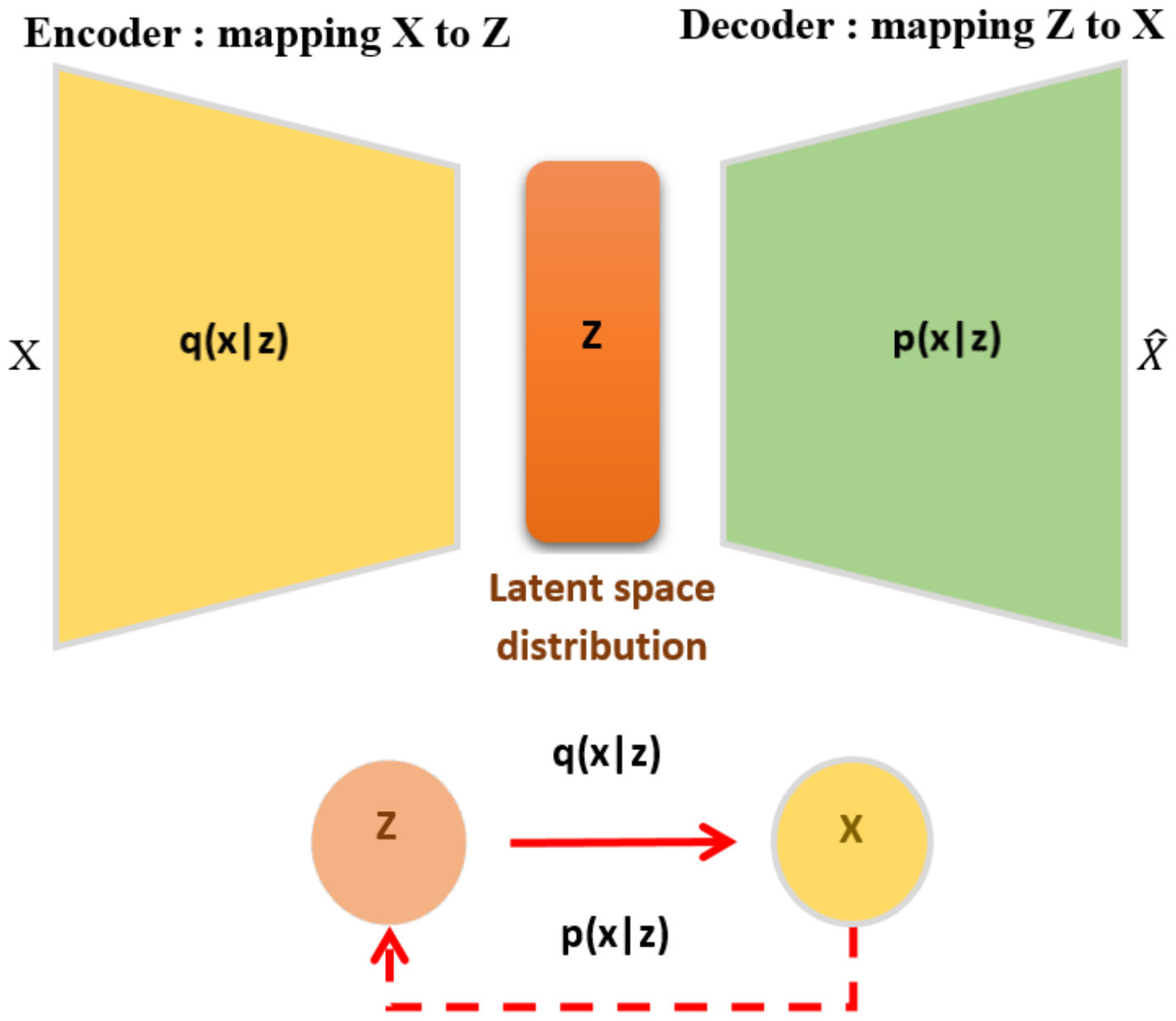
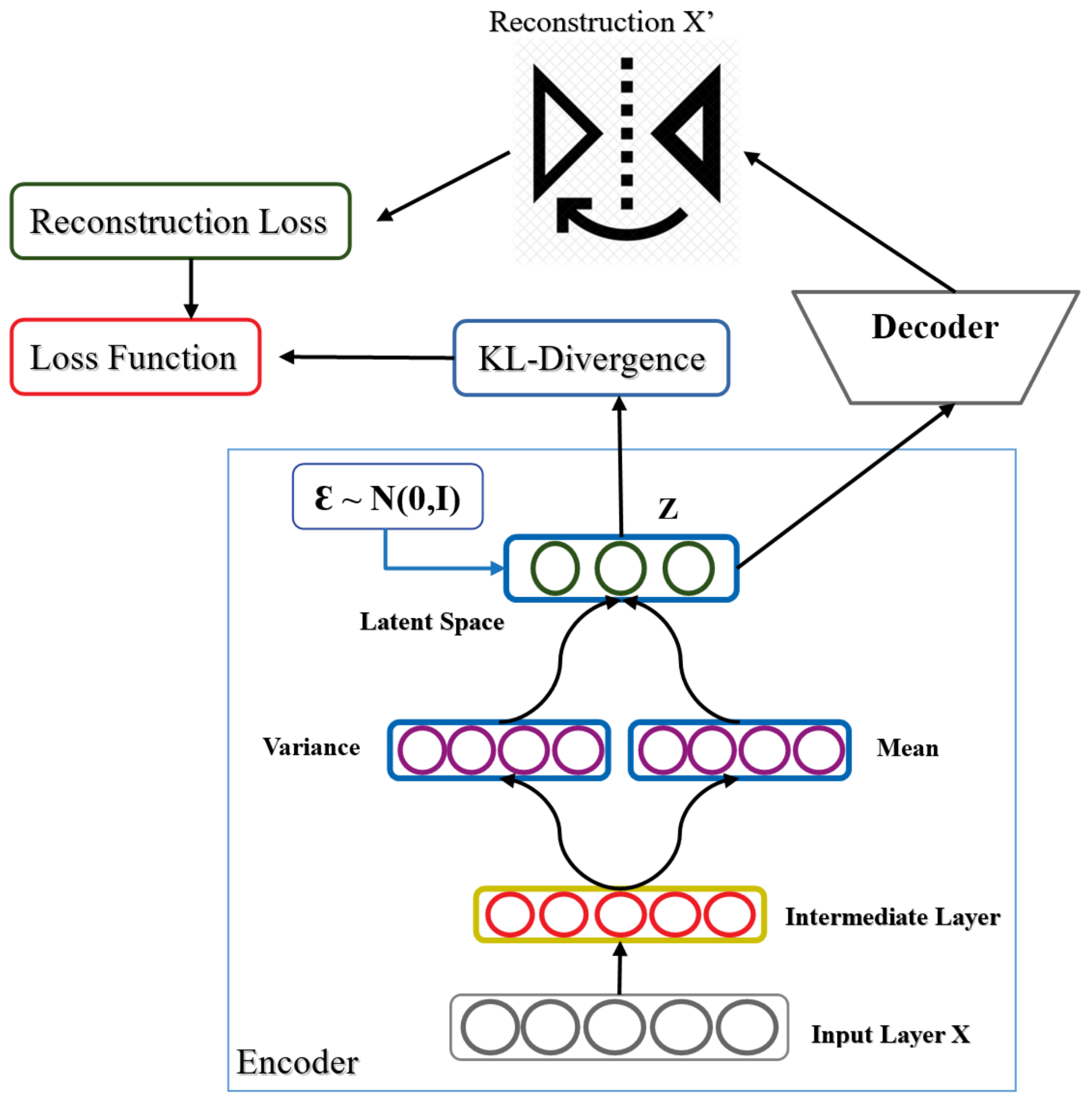

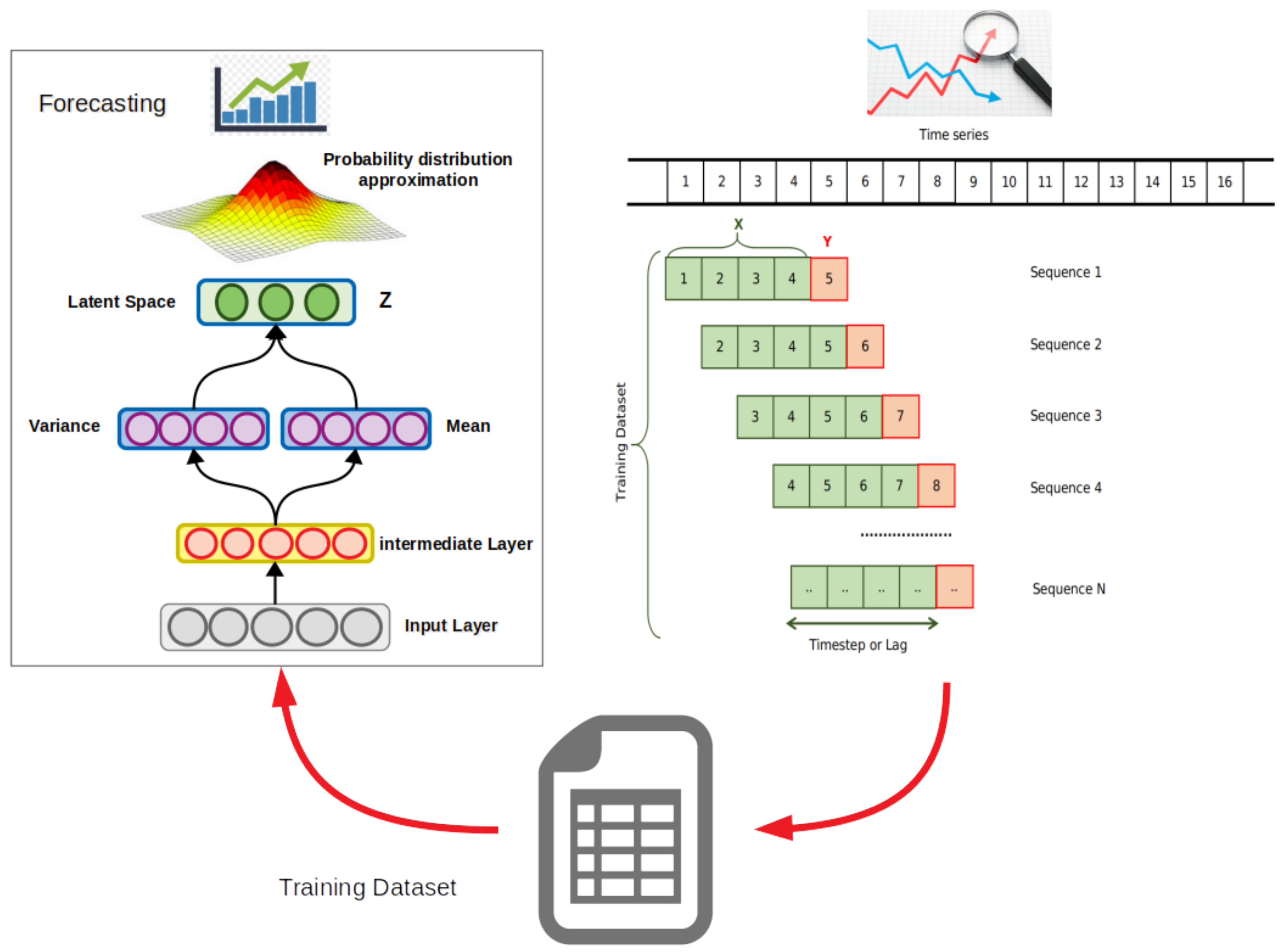
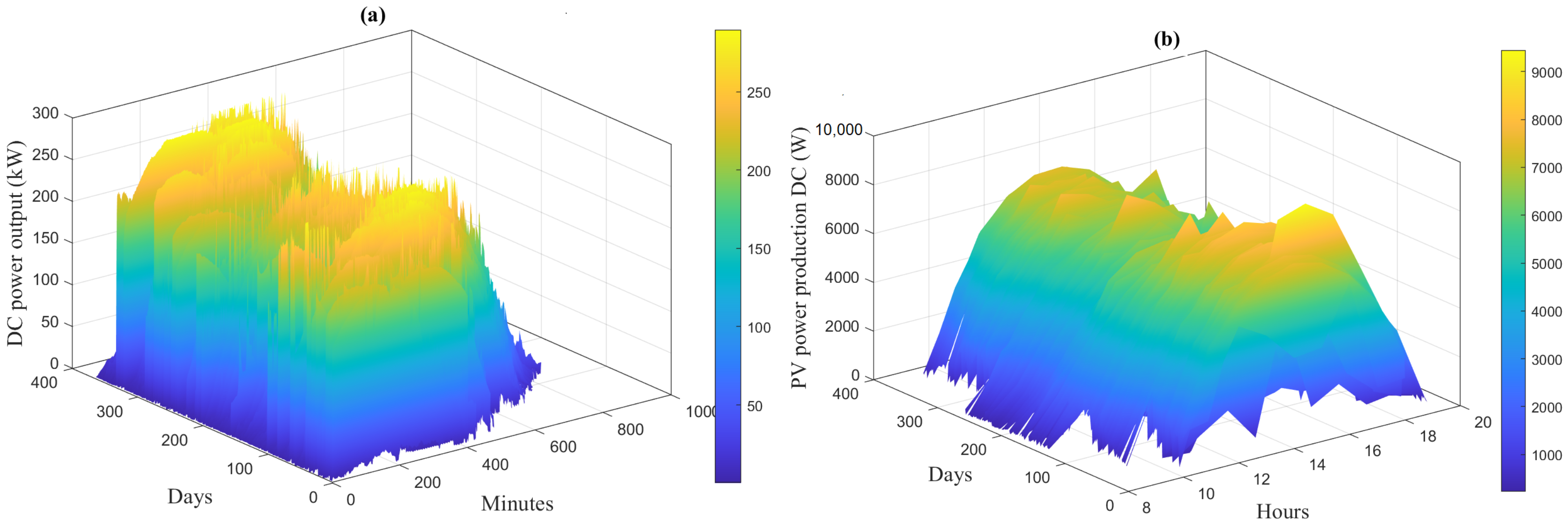
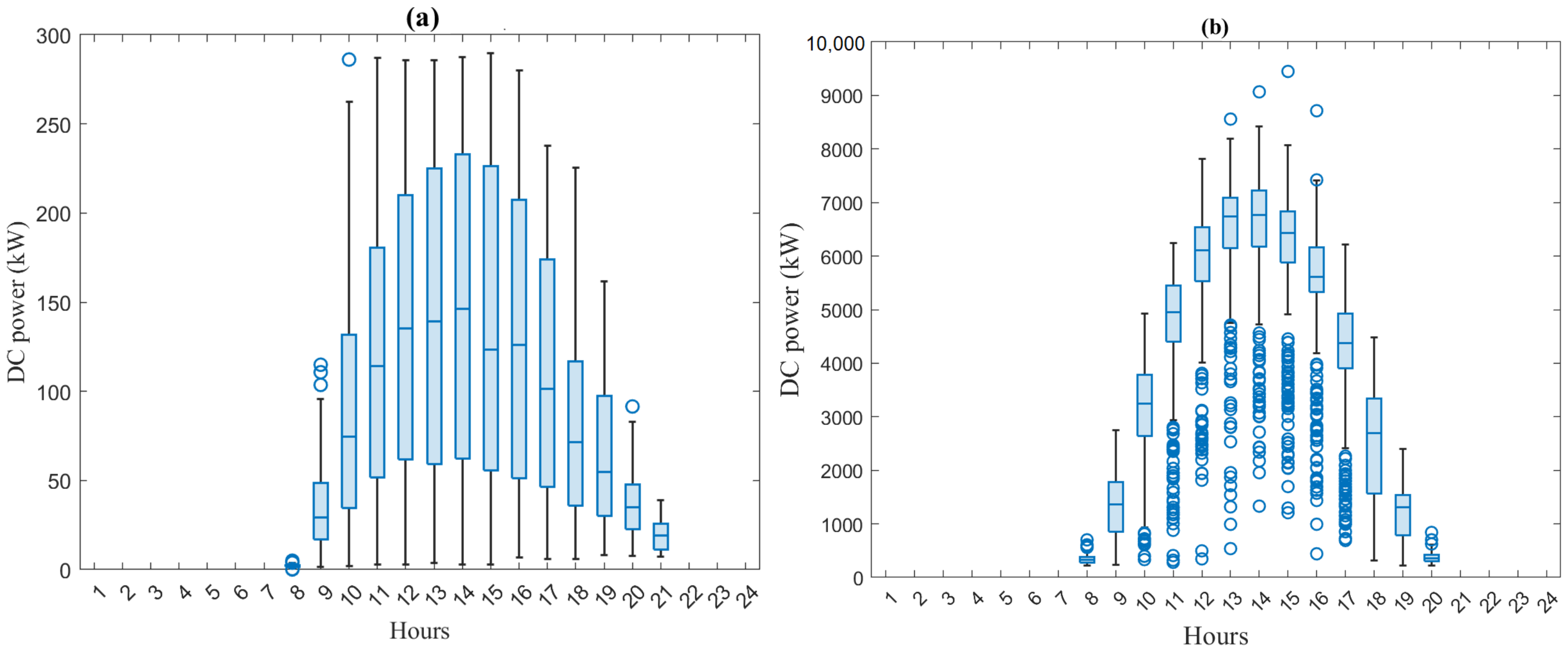

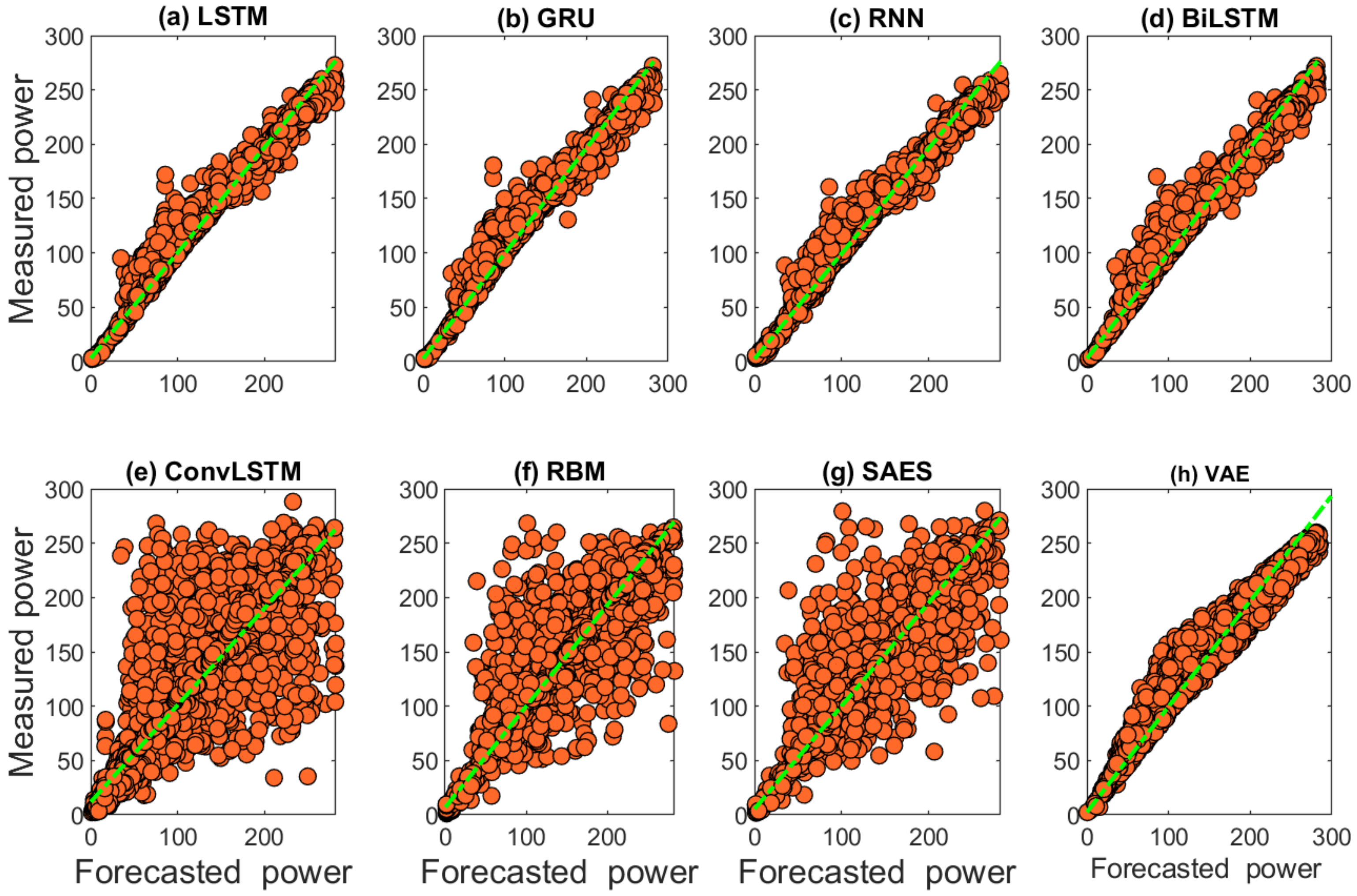
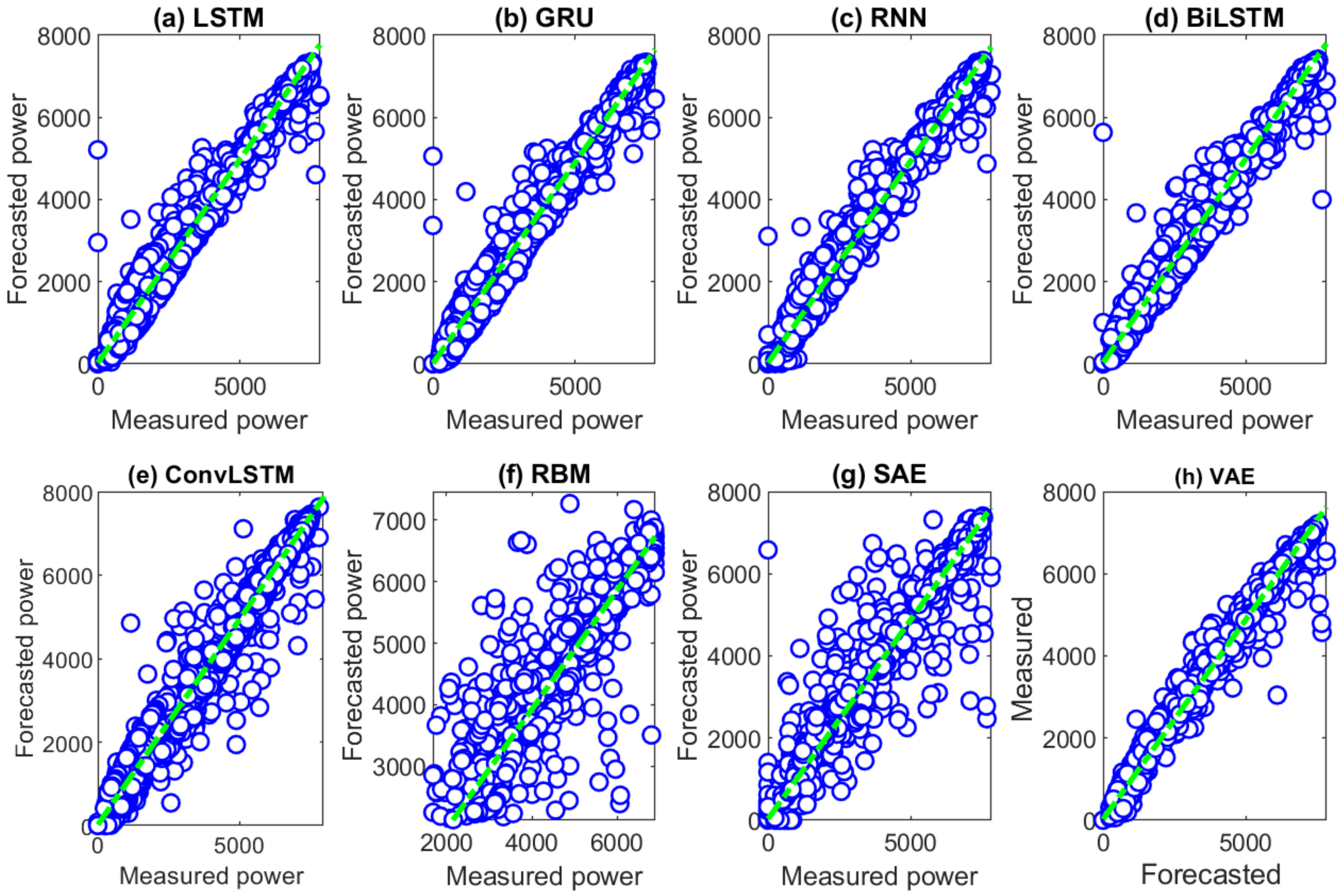
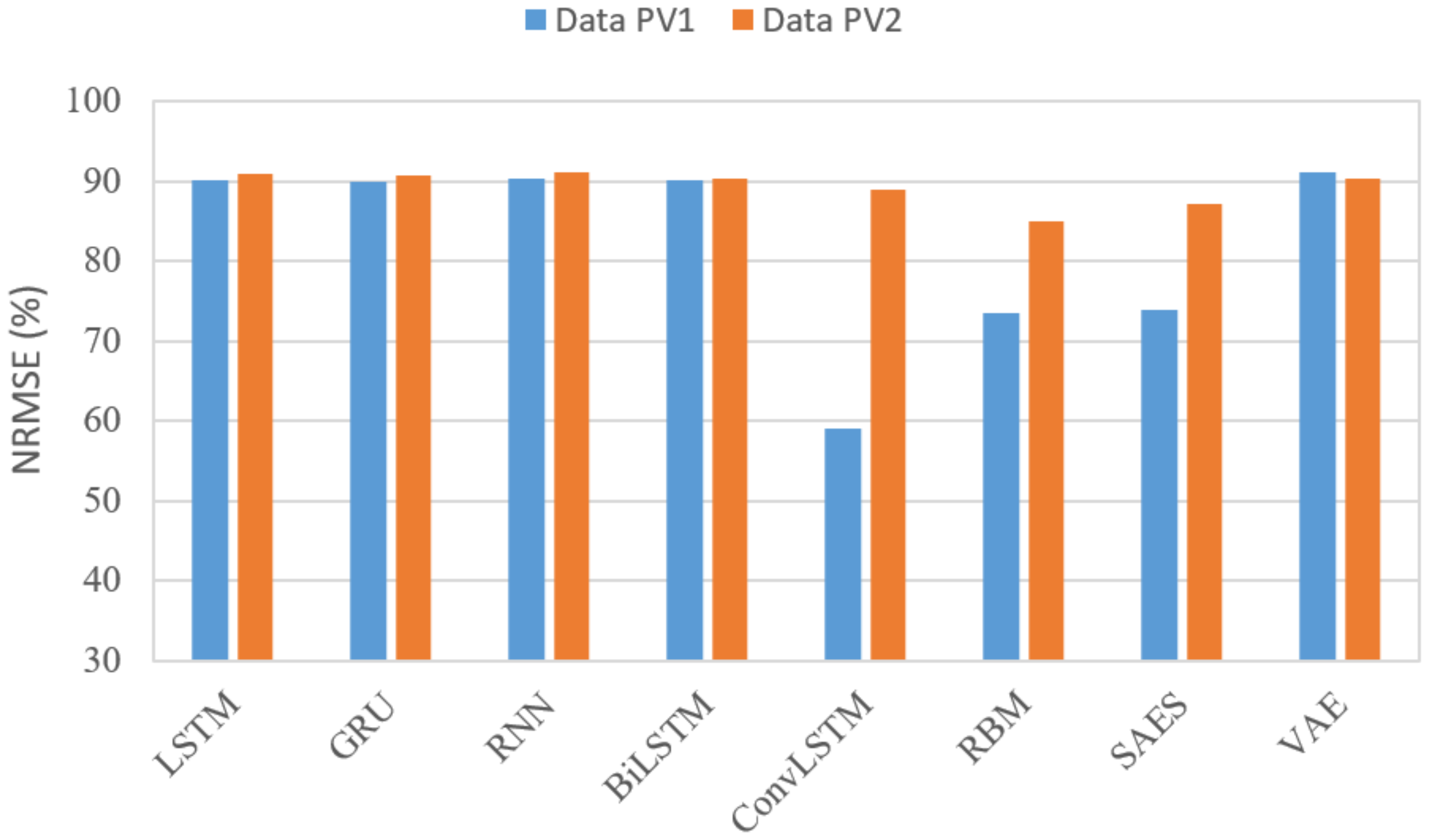
| Model | Description | Key Points |
|---|---|---|
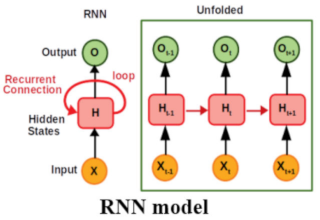 |
|
|
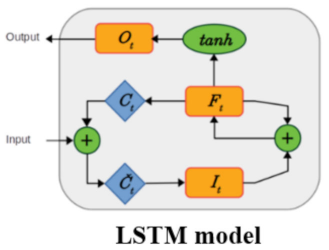 |
|
|
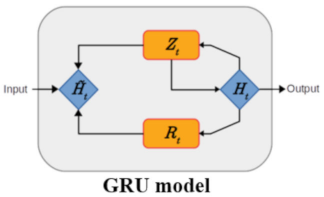 |
|
|
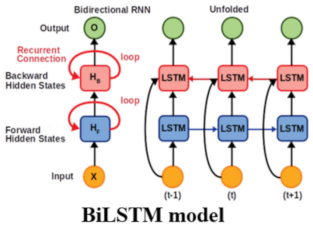 |
|
|
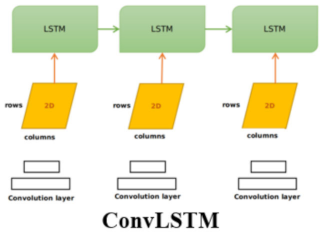 |
|
|
 |
|
|
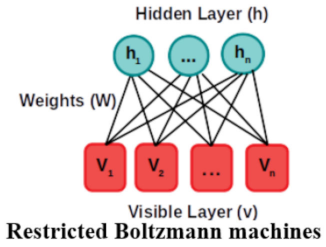 |
|
|
| Methods | Parameter | Value |
|---|---|---|
| learning rate | 0.0005 | |
| RBM | Gibbs sampling (k) | 5 |
| Training epochs | 500 | |
| Layers | 01 | |
| SEAS | Learning rate | 0.0005 |
| Training epochs | 500 | |
| Layers | 04 | |
| VAE | Learning rate | 0.0005 |
| Training epochs | 500 | |
| Layers | 05 | |
| RNN | Learning rate | 0.0005 |
| Training epochs | 500 | |
| GRU | Learning rate | 0.0005 |
| Training epochs | 200 | |
| LSTM | Learning rate | 0.0005 |
| Training epochs | 200 | |
| BiLSTM | Learning rate | 0.0005 |
| Training epochs | 200 | |
| ConvLSTM | Learning rate | 0.0005 |
| Training epochs | 200 |
| Method | R2 | RMSE | MAE | EV |
|---|---|---|---|---|
| LSTM | 0.990 | 7.672 | 3.911 | 0.990 |
| GRU | 0.990 | 7.768 | 4.022 | 0.990 |
| RNN | 0.991 | 7.539 | 4.072 | 0.991 |
| BiLSTM | 0.990 | 7.722 | 3.910 | 0.990 |
| ConvLSTM | 0.832 | 31.842 | 16.338 | 0.832 |
| RBM | 0.929 | 20.672 | 8.910 | 0.929 |
| SAE | 0.932 | 20.301 | 8.300 | 0.932 |
| SVM | 0.971 | 14.174 | 12.889 | 0.972 |
| LG | 0.965 | 15.45 | 9.942 | 0.966 |
| VAE | 0.995 | 5.471 | 3.232 | 0.995 |
| Method | R2 | RMSE | MAE | EV |
|---|---|---|---|---|
| LSTM | 0.992 | 246.781 | 107.799 | 0.992 |
| GRU | 0.991 | 250.004 | 117.622 | 0.992 |
| RNN | 0.992 | 241.170 | 125.960 | 0.992 |
| BiLSTM | 0.991 | 259.884 | 117.579 | 0.991 |
| ConvLSTM | 0.692 | 1500.070 | 846.750 | 0.692 |
| RBM | 0.977 | 407.238 | 170.568 | 0.977 |
| SAE | 0.983 | 349.066 | 124.772 | 0.983 |
| SVM | 0.924 | 770.996 | 699.837 | 0.954 |
| LG | 0.899 | 886.665 | 837.721 | 0.926 |
| VAE | 0.995 | 199.645 | 99.838 | 0.995 |
| Algerian | PV | System | Parking | Lot | Canopy | Array | ||||
|---|---|---|---|---|---|---|---|---|---|---|
| Model | Steps | Minutes | RMSE | MAE | R2 | EV | RMSE | MAE | R2 | EV |
| BiLSTM | 2 | 30 | 1591.639 | 1303.28 | 0.675 | 0.876 | 18.309 | 10.011 | 0.951 | 0.953 |
| CNN | 2 | 30 | 1007.54 | 613.344 | 0.87 | 0.888 | 24.105 | 16.534 | 0.915 | 0.916 |
| ConvLSTM2D | 2 | 30 | 359.128 | 262.526 | 0.983 | 0.991 | 17.31 | 7.786 | 0.956 | 0.956 |
| GRU | 2 | 30 | 910.589 | 770.907 | 0.894 | 0.936 | 17.454 | 7.897 | 0.955 | 0.955 |
| LSTM | 2 | 30 | 376.359 | 285.324 | 0.982 | 0.982 | 17.47 | 7.914 | 0.955 | 0.955 |
| RBM | 2 | 30 | 390.581 | 213.174 | 0.98 | 0.98 | 17.564 | 7.847 | 0.955 | 0.955 |
| RNN | 2 | 30 | 1448.063 | 1170.279 | 0.731 | 0.868 | 18.101 | 8.474 | 0.952 | 0.953 |
| SAE | 2 | 30 | 477.986 | 255.739 | 0.971 | 0.974 | 17.724 | 8.783 | 0.954 | 0.955 |
| VAE | 2 | 30 | 303.091 | 117.701 | 0.988 | 0.988 | 17.31 | 7.566 | 0.956 | 0.956 |
| BiLSTM | 3 | 45 | 374.303 | 186.576 | 0.982 | 0.982 | 21.855 | 12.028 | 0.93 | 0.93 |
| CNN | 3 | 45 | 1166.323 | 749.863 | 0.826 | 0.84 | 26.135 | 18.617 | 0.9 | 0.9 |
| ConvLSTM2D | 3 | 45 | 370.848 | 260.922 | 0.982 | 0.986 | 21.315 | 10.397 | 0.933 | 0.934 |
| GRU | 3 | 45 | 395.163 | 225.154 | 0.98 | 0.98 | 21.78 | 11.596 | 0.93 | 0.932 |
| LSTM | 3 | 45 | 367.048 | 194.691 | 0.983 | 0.983 | 21.485 | 9.707 | 0.932 | 0.932 |
| RBM | 3 | 45 | 579.104 | 341.151 | 0.957 | 0.958 | 21.76 | 10.434 | 0.931 | 0.931 |
| RNN | 3 | 45 | 428.615 | 284.6 | 0.976 | 0.977 | 22.458 | 11.99 | 0.926 | 0.93 |
| SAE | 3 | 45 | 521.723 | 255.686 | 0.965 | 0.969 | 21.823 | 10.335 | 0.93 | 0.93 |
| VAE | 3 | 45 | 344.468 | 164.635 | 0.985 | 0.985 | 21.461 | 9.878 | 0.932 | 0.932 |
| BiLSTM | 4 | 60 | 432.448 | 229.34 | 0.976 | 0.977 | 23.687 | 13.131 | 0.918 | 0.92 |
| CNN | 4 | 60 | 949.999 | 567.358 | 0.884 | 0.897 | 27.022 | 17.502 | 0.893 | 0.9 |
| ConvLSTM2D | 4 | 60 | 462.93 | 360.618 | 0.972 | 0.978 | 23.174 | 12.113 | 0.921 | 0.921 |
| GRU | 4 | 60 | 538.857 | 381.686 | 0.963 | 0.965 | 23.252 | 11.681 | 0.921 | 0.921 |
| LSTM | 4 | 60 | 533.916 | 355.042 | 0.963 | 0.966 | 23.298 | 11.912 | 0.92 | 0.921 |
| RBM | 4 | 60 | 614.722 | 379.406 | 0.951 | 0.951 | 23.321 | 11.605 | 0.92 | 0.92 |
| RNN | 4 | 60 | 476.67 | 297.196 | 0.971 | 0.971 | 24.152 | 13.208 | 0.914 | 0.918 |
| SAE | 4 | 60 | 554.917 | 274.536 | 0.96 | 0.961 | 23.604 | 11.768 | 0.918 | 0.918 |
| VAE | 4 | 60 | 420.029 | 193.157 | 0.977 | 0.978 | 23.134 | 11.664 | 0.921 | 0.921 |
Publisher’s Note: MDPI stays neutral with regard to jurisdictional claims in published maps and institutional affiliations. |
© 2020 by the authors. Licensee MDPI, Basel, Switzerland. This article is an open access article distributed under the terms and conditions of the Creative Commons Attribution (CC BY) license (http://creativecommons.org/licenses/by/4.0/).
Share and Cite
Dairi, A.; Harrou, F.; Sun, Y.; Khadraoui, S. Short-Term Forecasting of Photovoltaic Solar Power Production Using Variational Auto-Encoder Driven Deep Learning Approach. Appl. Sci. 2020, 10, 8400. https://doi.org/10.3390/app10238400
Dairi A, Harrou F, Sun Y, Khadraoui S. Short-Term Forecasting of Photovoltaic Solar Power Production Using Variational Auto-Encoder Driven Deep Learning Approach. Applied Sciences. 2020; 10(23):8400. https://doi.org/10.3390/app10238400
Chicago/Turabian StyleDairi, Abdelkader, Fouzi Harrou, Ying Sun, and Sofiane Khadraoui. 2020. "Short-Term Forecasting of Photovoltaic Solar Power Production Using Variational Auto-Encoder Driven Deep Learning Approach" Applied Sciences 10, no. 23: 8400. https://doi.org/10.3390/app10238400
APA StyleDairi, A., Harrou, F., Sun, Y., & Khadraoui, S. (2020). Short-Term Forecasting of Photovoltaic Solar Power Production Using Variational Auto-Encoder Driven Deep Learning Approach. Applied Sciences, 10(23), 8400. https://doi.org/10.3390/app10238400





